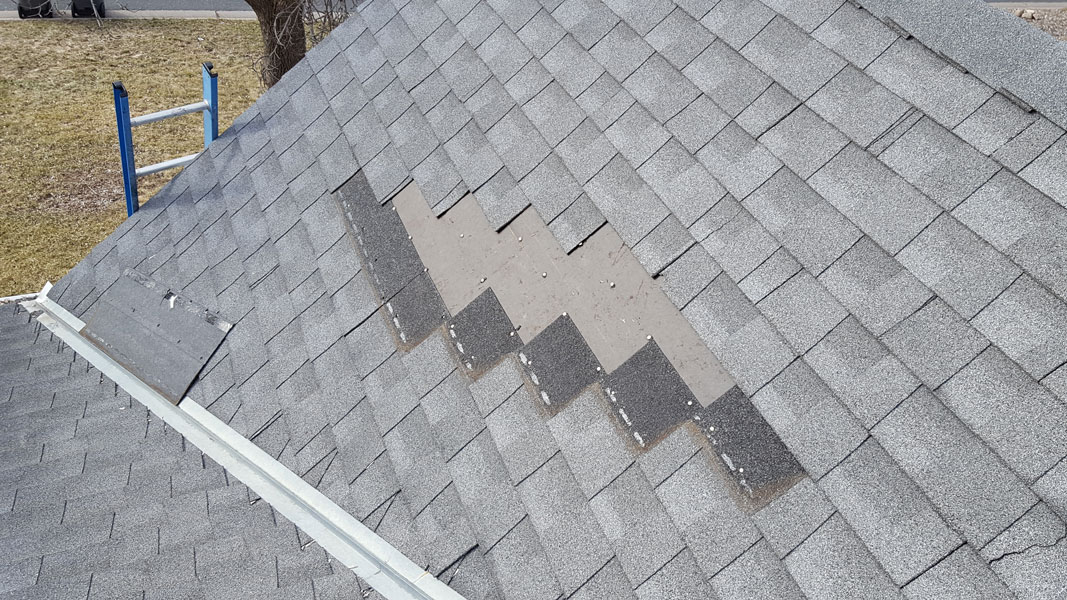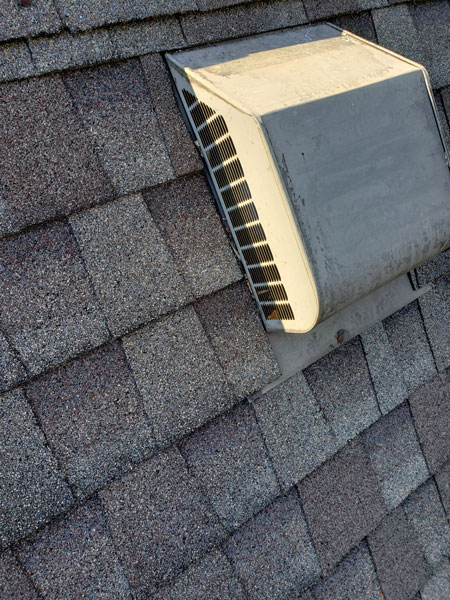Roofing Gone Wrong
Over the years, we’ve seen plenty. Below are a few examples of what other roofers have gotten wrong. Some lighthearted, some serious.
Top-Rated Shingles are Nothing Unless They are Installed Correctly
According to industry statistics, the leading cause of wind damage to a roof is improper nailing of the shingles. There are strict instructions on how shingles are to be nailed to the roof decking. If the nailing is bad, the only way to repair this issue is to replace the bad sections, or sometimes the entire roof. Also, this is an easy way for shingle manufacturers to void their warranty. In the first photo, even Corning’s SureNail® technology can’t prevent bad nailing, as these nails are overdriven far too deep into the shingle, making it very easy for wind storms to rip open the roof.
Improper Flashing
Flashing skylights, chimneys, and walls can be an art form. Incorrectly install one or two pieces of metal flashing and the resulting damage can be ugly and costly to fix.
Outdated or Old Equipment
Updating your equipment is a must! A bad nail gun can leave nails not seated correctly or left popped up. As you can see, the head of the nail is poking through these shingles, even some that are newly installed. It’s a great way to ruin a new roof and to be a source of a water leak.
Improperly Installed Roof Vents
It’s surprising how many roofing companies don’t have the basic knowledge to install a simple roof vent. Every year we repair mistakes like what you see in the first image. The other images all show air vents that are improperly flashed in. Again, this shows a serious lack of knowledge. How does that water spot on the ceiling appear? These are all possible sources, and they should never happen.
Bad Technique
The first photo shows two major mistakes. One, the roofer racked up the laminate shingles when they were supposed to be using a five-course diagonal installation method. Two, the offset/overlapping, or spacing, is not done correctly. This was the source of the water leak in this owner’s house. The second photo shows an example of a correctly done five-course diagonal installation.
Improper Materials
This picture shows how water can travel. Clearly, the small flanges of this roof vent cannot shed the water which lead to a leak into this house. The roof vents or material selection of your roofer can make all the difference of keeping the elements out.

Lack of Industry Knowledge
Our greatest advice to homeowners is to screen your roofing contractor. Today’s ownership usually doesn’t have much, if any, hands-on experience. Many have never replaced a roof themselves. It’s hard to set a standard for excellence when you don’t have the knowledge to do so. Their hope is that their sub-contracting crew has all the knowledge to properly install the roof. Subcontractors, however, are not licensed and are not required to know housing codes. So if their knowledge is lacking, your roof may not be what it should be.
To avoid major headaches and ongoing issues:
- Know who’s doing the actual work;
- Understand the knowledge and leadership level of the company and their subs;
- Know that the roofer will follow up after the job, and that they will be there after the sale for any warranty issues;
- Ensure that the roofer reinvests in their company and updates their equipment. And verify that their subs do the same;
- Really get to know your contractor. Promises are easy, following through is another thing.
Remember, at the end of day, you are the one who has to live with the product they installed. So question everything, until you’re comfortable making a hiring decision.



















